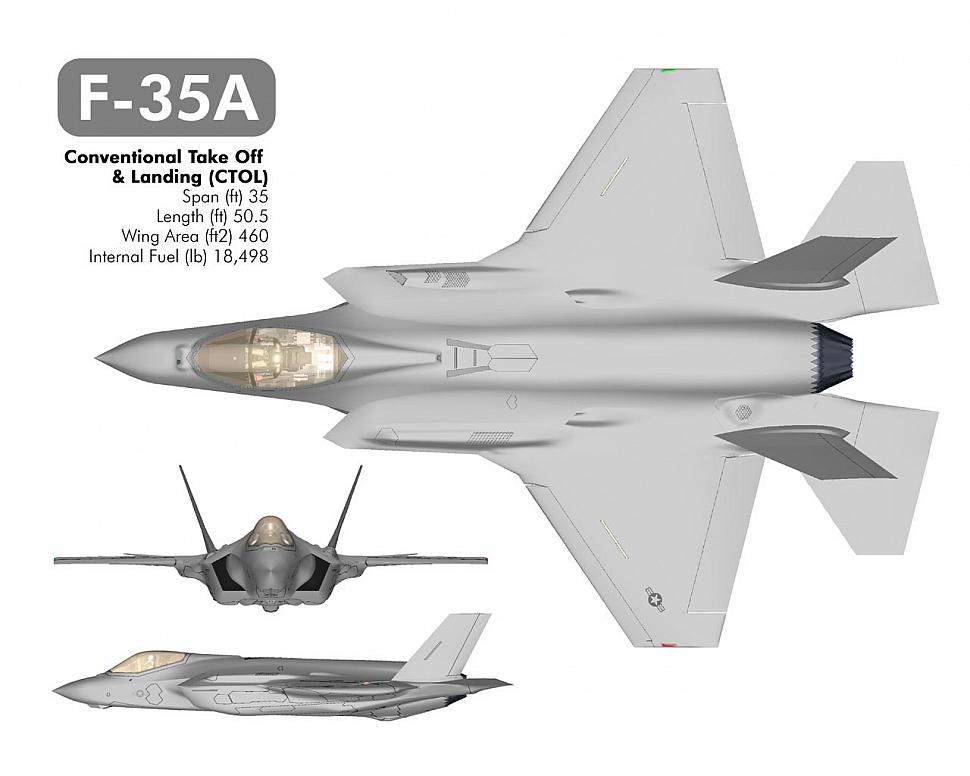When you’ve got over half a trillion dollars at stake, people will do or say pretty much anything. So it gets hard to figure out what’s going on when you read headlines in the form of “X is an ongoing disaster” alongside of “great cost-savings achieved via X” for any given X. It’s hard to be both a tremendous success and an ongoing disaster. I am, naturally, referring to the latest news about the F-35 program.

The mandatory F-35 picture
The F-35 was built with a high amount of “concurrency” in the development process; the idea was to build the different parts separately, on separate time-lines, so they could be tested separately and then integrated into the final version. There are risks to concurrent development – namely, that one part of the aircraft such as the engine, weapons systems, or computer controls – may change in design, and then the final version will require a bit of tweaking in order to adjust interfaces to make them compatible. For example (this is not a real example) suppose that the weapons bay doors were going to be slightly different in the final version, to preserve low radar cross-section: now you have earlier versions of the plane with version 1 bay doors, and newer versions with version 2 bay doors or even version 3 bay doors, and you’ve got less capable aircraft in the earlier model runs.
One way of looking at this is “military aircraft evolve fast; concurrency simply compresses the evolution time-scale and so what, we know how to manage multiple versions of things.” Some systems, like the M-1 Abrams tank, have evolved so much since their debut 30 years ago, that the current versions are basically a whole new design. [wib] In that case, you’d do something like sell the earlier generation to Turkey or Egypt [stderr] and buy a whole bunch of the new ones. Another way of looking at it is that the older versions, if they weren’t suitable for combat use can’t be sold to anyone, and are either going to need to be retrofitted or scrapped. Back to the example of the weapons bay doors: if you have a plane that can’t mount actual weapons because of the version 1 bay doors, you need to make extremely expensive retrofits – some of which might cost a significant percentage of the plane’s cost. Military jets and spaceships are probably some of the most exacting designs humans build. Some little changes can cause huge cascades of changes – and then you are paying for the cost of undoing the old version and re-doing the new version.
If you read some sources it sounds just great: [forbes]
As the program has gradually retired risk and proven its potential, the handful of diehard critics who still contend it was a bad idea have been forced to embrace increasingly arcane reasons for not proceeding as planned. One such argument is “concurrency,” the overlapping of developmental steps to speed fielding of the fighter. The case against concurrency in building the F-35 was laid out in a 2013 Pentagon report to Congress:
Concurrency is defined as the overlap in the development and production phases of the acquisition program. Concurrency introduces the risk that aircraft built in early production lots will require modification due to discoveries made during qualification, flight and ground tests, or as a result of engineering analysis.
No doubt about it, there is a real risk that users will have to retrofit items onto early production versions of the plane so that they will conform with the final configuration — which is now pretty much known, since over 95% of flight testing has been completed. But how important is this risk really? The estimated cost of the retrofits for all the planes so far delivered is less than $2 billion, representing about one-half of 1% of the program’s acquisition cost (and about one-fifth of 1% of the total life-cycle cost).
The Lexington Institute has been called the “defense industry’s pay-to-play ad agency”, reflecting that it receives funding from military contractors and issues stream of reports, usually favorable, about the performance and status of key weapons programs. However, institute staffers are frequently critical of particular weapons or policies, assailing among other things the Navy’s next-generation destroyer, the Army’s future troop carrier, a proposed joint replacement for the Humvee light tactical vehicle and most of the acquisition reform measures proposed during the Obama Administration. Media citations frequently note that Lexington staffers have ties to military contractors. Thompson stated, “I’m not going to work on a project unless somebody, somewhere, is willing to pay. This is a business. My bottom line is that if what I write and say is true, it doesn’t really matter what my motives are.”
The new F-35 Program Executive Officer, Vice Admiral Mat Winter, said his office is exploring the option of leaving 108 aircraft in their current state because the funds to upgrade them to the fully combat-capable configuration would threaten the Air Force’s plans to ramp up production in the coming years. These are most likely the same 108 aircraft the Air Force reportedly needed to upgrade earlier in 2017. Without being retrofitted, these aircraft would become “Concurrency Orphans,” airplanes left behind in the acquisition cycle after the services purchased them in haste before finishing the development process.
Left unsaid so far is what will become of the 81 F-35s purchased by the Marine Corps and Navy during that same period. If they are left in their current state, nearly 200 F-35s might permanently remain unready for combat because the Pentagon would rather buy new aircraft than upgrade the ones the American people have already paid for. What makes this particularly galling is the aircraft that would be left behind by such a scheme were the most expensive F-35s purchased so far. When the tab for all the aircraft purchased in an immature state is added up, the total comes to nearly $40 billion. That is a lot of money to spend on training jets and aircraft that will simply be stripped for spare parts.
$21 billion to $40 billion – the current odds-on bet is that they’ll be used as trainers.

Now with stealth and data fusion
It’s hard to tell how much these aircraft even cost, because it’s deliberately difficult to do a fair comparison (the whole “block buy” model is a way of making it harder to come up with a per-aircraft price; the cost of the plane varies with the number in the block and the tide, and who’s president) [pogo]
This sounds like another victory for the F-35 program, a program which appears to be doing for the air force what the aircraft carriers did for the navy: make a single weapons system that is so expensive you can only buy enough of them to be unable to carry out any mission.
Here’s how it looks to me: in order for Lockheed Martin and the air force to avoid criticism that the F-35 is late, over-priced, and not meeting specifications, they declared unfinished aircraft “deployed” even though they were not combat-capable. To keep the program from being cancelled, it was necessary to be able to show the planes were in use, to some degree, even though that was only in simulated battles without weapons systems, mostly proving out stealth capability. They were rushed into the field to demonstrate that they could fly, and the government bought over 200 aircraft that are not combat-capable and probably never will be. That was a deliberate move to protect the program and the pork pipeline; the people who made those decisions knew exactly what they were doing. It’s possibly the largest crime that’s ever been committed.

The fuzz are right on the case, I’m sure.
@Siobhan, I rather think they are in on the case.
Hmmm. Not sure. The Kobe Steel thing seems like it might be a pretty big deal.
Given how “law abiding” the Japanese are supposed to be, why are their white collar crimes all so…epic?
@bmiller:
Because it’s all about the face-saving, which means nobody ever admits to a problem until it becomes impossible to hide it. And everybody helps because nobody wants a ‘good upstanding citizen’ to be brought into disrepute. Which means scandals like this get years to fester under the surface as long as none of the people knowingly and adversely affected have enough clout to bring anything forward. And, of course, once you’re covering things up already, that reduces the pressure to actually stop doing whatever it is you’re covering up. Instead people just hope it doesn’t come up while they’re still working there.
Not that face-saving isn’t also a problem in American businesses too. It definitely is. It’s just not quite the same level of cultural obsession as it is in Japan.
“…My bottom line is that if what I write and say is true, it doesn’t really matter what my motives are.”
Wow, he says that almost as if he has never heard of vested interests compromising impartiality before…
Governments don’t do crime. They define crime. Unfortunately this can be true in more than one sense.
Holms@#5:
Wow, he says that almost as if he has never heard of vested interests compromising impartiality before…
Yeah, but he said it really sincerely.
I thought it very interesting that he published that “wow, concurrency rawks!” piece in Forbes just before a wave of dirt broke about concurrency. It’s as if someone, you know, hinted strongly that he might want to.
Now, let’s return to the 24/7 news-cycle about how the Russians manipulated the American media…
lanir@#6:
Governments don’t do crime. They define crime.
… and they regulate and privatize it.